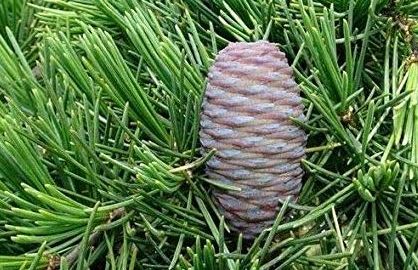
Description : The Deodar cedar (Cedrus deodara) is an evergreen conifer tree that is favored for its weeping habit. It is often used as a specimen tree in parks and other large gardens and can also be used to line streets.
Tall, evergreen tree dark-green foliage, forming a typical conical crown. Branches two types, long shoots bear spirally arranged leaves, dwarf shoots bear cluster of leaves in pseudowhorls. The dwarf shoots elongate lightly, adding a new whorl of leaves each year. Flowers monoecious, male and female cones occurring on separate branches.
Uses : Bark of the herb is a good remedy in remittent and intermittent fevers, diarrhea and dysentery. The powder is used in the treatment of ulcers. It is particularly valuable for the treatment of bilious fevers and inveterate diarrhea arising from atony of the muscular fiber.
Cedarwood oil, extracted from the herb, is used for catarrhal conditions of the respiratory tract. It is an expectorant. It is also useful for ulcers and skin diseases.
Cedarwood oils each have characteristic woody odours which may change somewhat in the course of drying out. The crude oils are often yellowish or even darker in colour and some, such as Texas cedarwood oil, are quite viscous and deposit crystals on standing. They find use (sometimes after rectification) in a range of fragrance applications such as soap perfumes, household sprays, floor polishes and insecticides. Small quantities are used in microscope work as a clearing oil.
In India, Cedrus deodara oil has been shown to possess insecticidal and antifungal properties and to have some potential for control of fungal deterioration of spices during storage. However, its commercial use for this purpose remains, at present, speculation.
Benefits :
- The bark of cedarwood proves to be a good remedy in remittent and intermittent fevers, diarrhea and dysentery. The powder is used in the treatment of ulcers.
- The inner wood of the plant is aromatic and is thus, used to make incense. The inner wood is also distilled to make essential oils.
- The essential oil obtained from this plant is used as insect repellant on the feet of horses, cattle and camels, as insects avoid venturing close to it.
- Cedarwood possesses anti-fugal properties and has shown limited potential in controlling fungal deterioration of species, during storage.
- The outer bark and stem of the tree are used for making astringent.
- The biomedical actions of the plant are believed to be carminative and antispasmodic. It creates sweating and urination.
- The Ayurvedic functions of the plant promote digestive function, remove toxins from the bowel, alleviate coughing, and cure skin disorders, such as eczema and psoriasis.
- As it possesses aromatic properties, cedar oil is often used in aromatherapy. It has a characteristic woody whiff, which can change slightly in the course of drying out.
- The resins of the herb are used as anti-obesity agent. They are also effectual in clearing the respiratory tract and reducing cough and cold.
- Cedarwood (deodar) is also used as a building material, as it is durable and rot-resistant. It has fine close grain, which can sustain high polish.
- Historically, cedarwood was used in construction of temples and landscape around temples. The famous houseboats of Kashmir and India are also made of deodar. During the colonial era, it was extensively used for construction of barracks, public buildings bridges, canals & railway cars.
Natural Extracts
Cedrus Deodara
Botanical Name : CEDRUS DEODARA Family Name : ZINGIBERACEAE Common Name : CEDARWOOD, CEDARWOOD OIL Part Used: Rhizomes Habitat: Grows wild in damp deciduous forests |
| ||||||||||||||||||||||||||||

